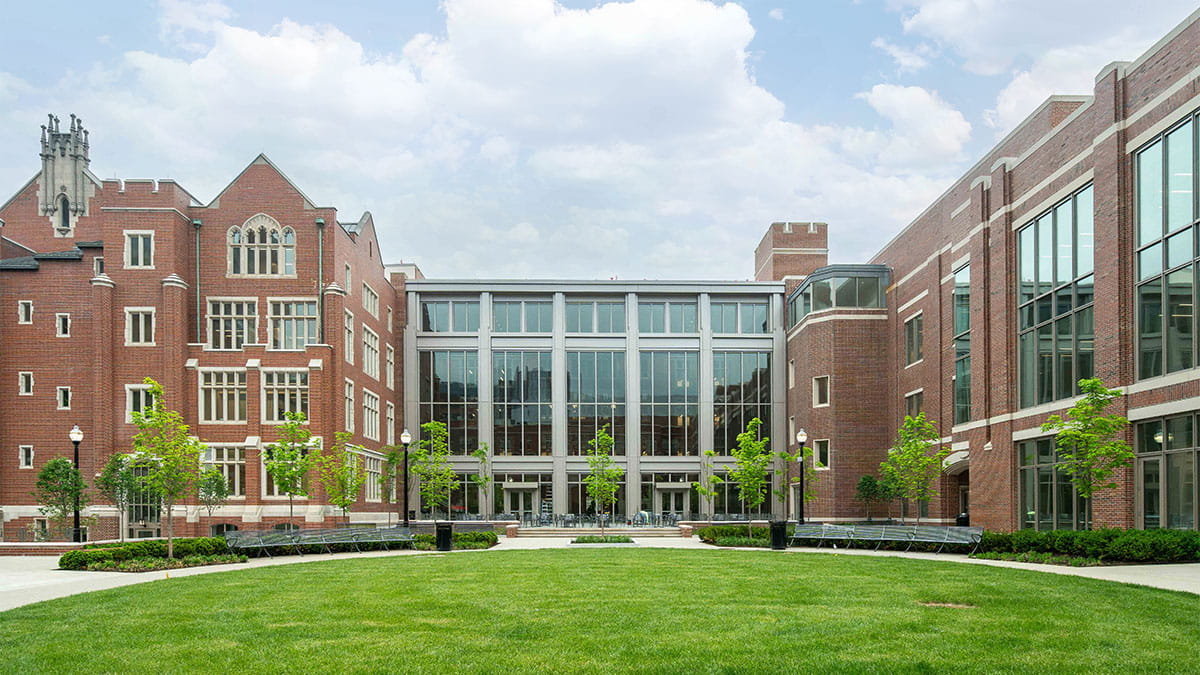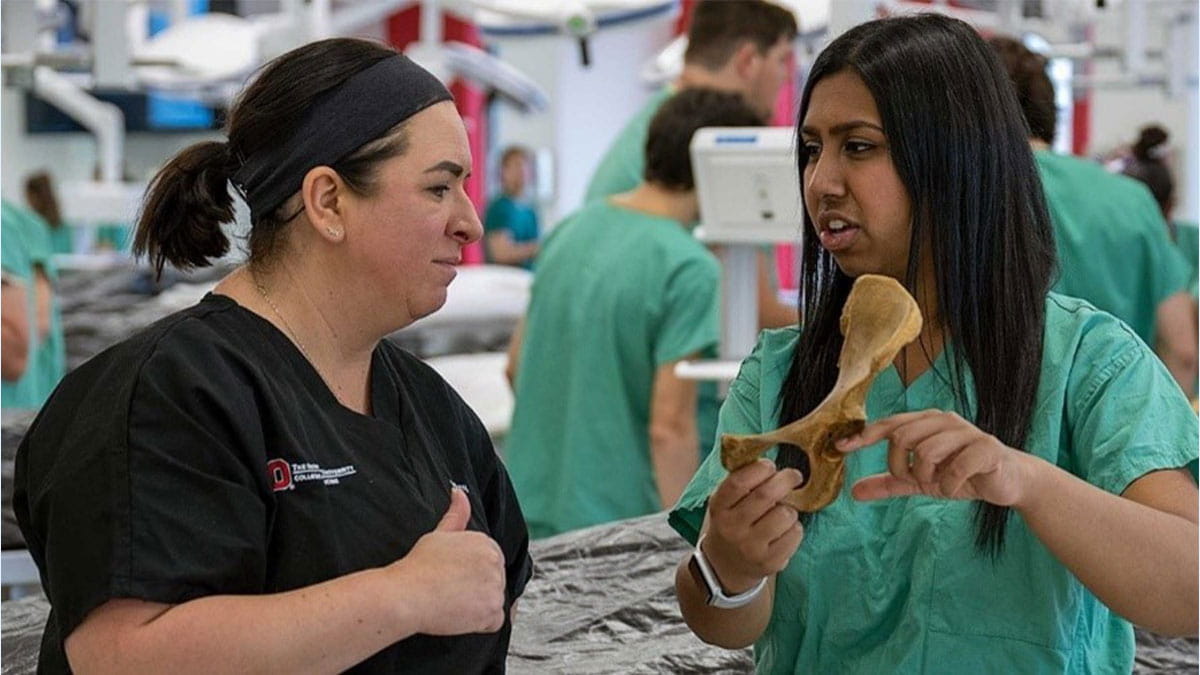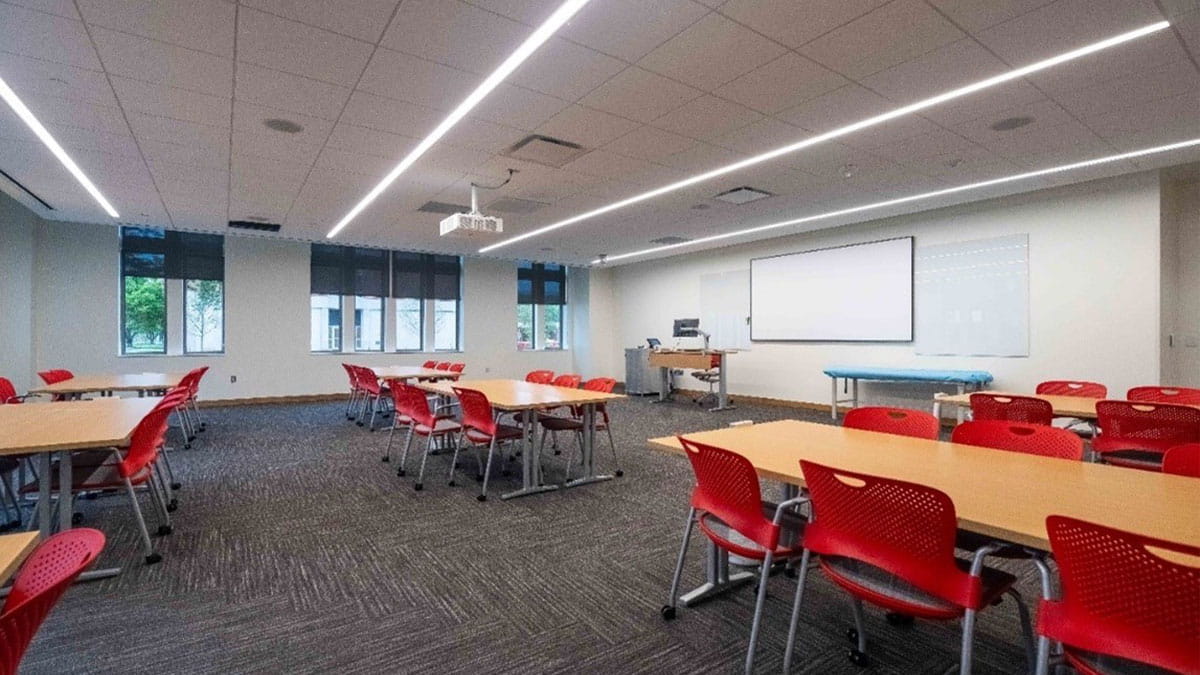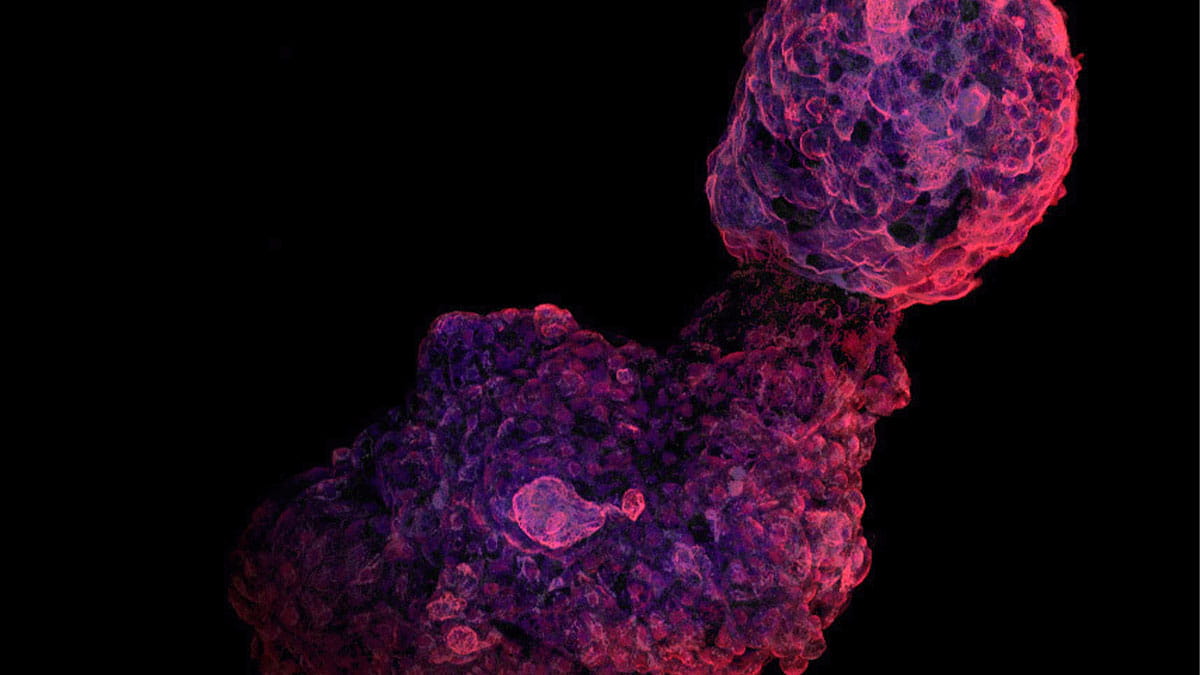New center furthers the legacy of Hamilton Hall and its role in revolutionizing academic medicine
If you head west on 11th Avenue and take a left onto Neil Avenue, you’ll pass the storied Hamilton Hall, a cornerstone of innovation in medical education for more than a century.
The building’s opening in 1925 was a historical step for The Ohio State University College of Medicine, as Hamilton Hall housed the first departments of Medicine and Dentistry on The Ohio State University campus, following the merging of the Starling Medical College and the Ohio Medical University. Before then, all Medicine and Dentistry department buildings were located off campus in downtown Columbus.
Now, Hamilton Hall is making history once again, this time by serving as the home of the new Interdisciplinary Health Sciences Center (IHSC). Following an extensive renovation and expansion, the 225,000-square-foot building provides upgraded and flexible spaces to create a collaborative campus for interprofessional education throughout the health sciences, strengthening the interdisciplinary curriculum at Ohio State.

Carol R. Bradford, MD, MS, FACS, dean of the Ohio State College of Medicine, praises the inventive clinical learning environment at the IHSC as critical examples of how Ohio State continues to be one of the most comprehensive health science campuses in the nation.
“The IHSC provides the modern tools, technology and state-of-the-art environments for learners and faculty to practice 21st century medicine and provide innovative clinical care,” Dr. Bradford says. “Our new health care education facility is designed to ensure our learners, researchers and practitioners continue to lead scientific discovery.”
Dan Clinchot, MD, vice dean of Education at the College of Medicine, says providing revolutionary teaching and research methods equally benefits learners, faculty and patients in the community. He furthers that staying on track of the robust plans to begin construction activities amid an unfolding global pandemic, enabled the project to remain on schedule.
“This enabled the planned technological improvements, including interprofessional medical team-based spaces to be in place to ensure interactive learning and collaboration between health science learners.” Dr. Clinchot says. “These tools prepare them to excel in interprofessional, collaborative care."
Dr. Clinchot credits the many formal and informal spaces throughout the IHSC with providing dedicated space and support for everyone to explore and practice wellness and making meaningful connections with others.
Phased opening
The building opened in three phases, with the first being the anatomy wing, which opened in January 2022. This three-story, 42,000-square-foot addition to Hamilton Hall includes six large dissection rooms with capacity for 115 tables. With modern laboratory technology and flexible spaces, the facility enables a learning experience that’s both multifaceted and collaborative. Instructors can project live demonstrations from the “command center,” which is equipped with high-tech surgical lights and a high-definition camera. Learners can view the demonstrations via TVs in the laboratory in real time and revisit recordings using their iPads.

Innovative features and collaborative spaces
In June 2023, the classroom wing opened, featuring flexible classroom designs that allow educators to meet expansive and diverse educational needs. With 36 classrooms, including two 150 person interprofessional spaces, the building readily supports hundreds of students on their learning journey throughout the academic year.
“The classroom wing also hosts a state-of-the-art anatomy lab for optometry and dental students, as well as optometry classrooms and labs,” Dr. Bradford says.

The final phase opened in June 2024, providing learners access to a computer lab and designated spaces to complete testing for medical licensure, as well as a multipurpose study/gathering space, a wellness center, a 125-seat grand reading room, student lounges and locker space. Several College of Medicine administrative offices opened as well, providing proximate support for learners.
Legacy of innovation
Perhaps the most striking space in the IHSC, the Forum features floor-to-ceiling windows, bringing the outdoors inside. The triple-glazed glass maximizes the admission of natural light into the building, which is a primary driver of occupant wellness.
“The Forum’s 300-person atrium and café will serve the health sciences campus community as a vibrant event and gathering space,” Dr. Clinchot says.
Hamilton Hall’s original exterior architecture and brick are featured in the space. In fact, the project hired a masonry ‘painter’ to color the new brick to match the original brick, seamlessly blending the past, present and future of the College of Medicine. Their work added to the 650,000+ onsite construction labor hours it took to complete the entire project.
Interdisciplinary collaboration
The IHSC was designed to foster interdisciplinary collaboration among learners and create spaces for people to meet, study and relax. The Forum provides an inspiring environment to host a team discussion or celebration, and the exterior space offers respite and access to the outdoors as students study and eat lunch together. Students also have access to multiple study rooms, a gym, student lounges and flexible huddle spaces to engage and interact with one another.
The IHSC also houses some of the most up-to-date technology — such as digital and virtual anatomy resources and an advanced electronic health record system. These resources put students at the forefront of innovation — whether by using realistic virtual reality models to simulate patient care or learning how video chats, texting and other emerging telehealth technologies can help support patient care.
Dr. Bradford says Hamilton Hall has historically been the epicenter of the advancements in medical education, research and clinical care.
“As great scientists and physicians have pushed innovation forward, they have built hospitals that surround Hamilton Hall, such as the University Hosptial and The Ohio University Comprehensive Cancer Center – Arthur G. James Cancer Hospital and Richard J. Solove Research Institute,” she says. “Now, the IHSC is leading a shift in health care culture to emphasize interdisciplinarian values, paving a path to even more success in the College of Medicine and the neighboring health care facilities.”
An internal celebration took place at the end of July, with many more planned for the fall and during the October Homecoming weekend. Enjoy a birds-eye view of the IHSC construction.















